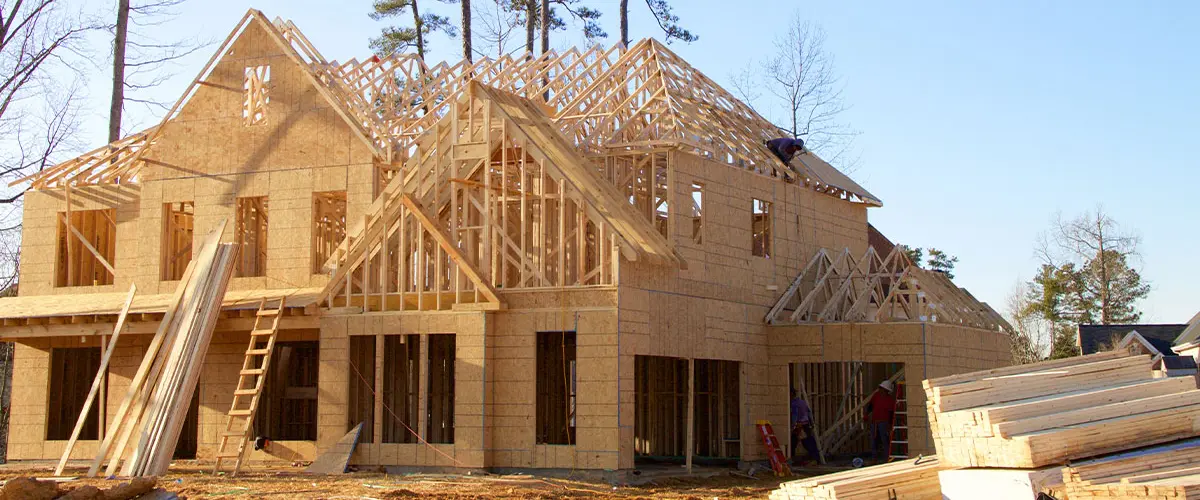Wood Frame Vs Steel Frame
Choosing between a wood frame and a steel frame for your home can be tough. Both have been popular in the construction industry for years. This article will compare them, looking at benefits and costs.
Keep reading to learn more.

Key Takeaways
- Wood frames are eco-friendly and cost-effective. They are made from trees, which help reduce CO2. Wood also keeps houses warm or cool, saving on energy bills.
- Steel frames are strong and last a long time. They don't get damaged by termites or rot. Steel is often recycled, making it good for the environment too.
- The cost of wood and steel frames can change because of market prices. However, steel usually needs less fixing over time, which might save money in the long run.
Pros of Wood Framing
Wood-framed homes bring many benefits. They use renewable resources, which makes them more environmentally friendly. Trees absorb CO2, reducing the carbon footprint of buildings with wood.
Wood is also a natural insulator, helping keep heating and cooling costs down for homeowners.
Wood framing offers both warmth and strength.
This method allows for quick adjustments during construction projects. Builders often prefer wood because it can support more weight than metal studs while still being cost-effective.
Plus, wooden frames add a unique charm to steel houses, making them stand out in residential construction.
Pros of Steel Framing
Steel framing brings many benefits for homeowners. Steel is strong and durable, making it great for building steel-framed houses that last. It stands up well against natural disasters like earthquakes and storms.
Unlike wood, steel does not rot or get damaged by termites. This means a steel-framed home can have fewer structural issues over time.
Using steel for frames also means less need for repairs and maintenance. This material is non-combustible, reducing the risk of fire in your home. For those looking to be eco-friendly, choosing a steel house frame is smart because it’s often made from recycled materials.
Plus, building with steel can be quicker due to its precision in manufacturing, leading to lower labor costs during the construction process.

Comparison of Costs and Durability
| Aspect | Wood | Steel |
|---|---|---|
| Initial Cost | Generally lower than steel. Cost varies depending on lumber market prices. | Higher upfront cost but can be offset by long-term savings. |
| Durability | Susceptible to termites, moisture, and can warp or rot over time. | Highly durable, does not rot, and is resistant to pests. |
| Longevity | With proper maintenance, can last 100 years or more. | Can last 100 years or more with minimal maintenance. |
| Maintenance Costs | May require more maintenance over time, leading to higher costs. | Lower maintenance requirements, leading to potential savings. |
| Impact of Market Prices | Lumber prices can fluctuate widely, affecting overall cost. | Steel prices are also subject to market fluctuations but are generally more stable than lumber prices. |

Top Manufacturers of Wood and Steel Frames
Leading Wood Frame Manufacturers
- Weyerhaeuser: Renowned for sustainable wood products, offering innovative solutions with a commitment to environmental responsibility.
- Georgia-Pacific: A well-established leader in wood framing, catering to diverse construction needs with high-quality materials.
- Boise Cascade: Specializes in engineered wood products, delivering durable and consistent framing solutions to builders nationwide.
Leading Steel Frame Manufacturers
- Nucor: Trusted supplier of steel products, known for energy-efficient production methods and high-performance structural framing options.
- BlueScope Steel: Offers strong and versatile steel framing suitable for a variety of residential and commercial projects.
- ArcelorMittal: Industry leader in steel manufacturing, valued for sustainable practices and advanced technological solutions for modern construction.

Wood Frame vs Steel Frame - FAQs
Trust Our Experienced Team for Your Project
Our team of seasoned professionals has been providing exceptional building services for years. Work with the best to save money long-term—contact us at (732) 913-0742 today!
